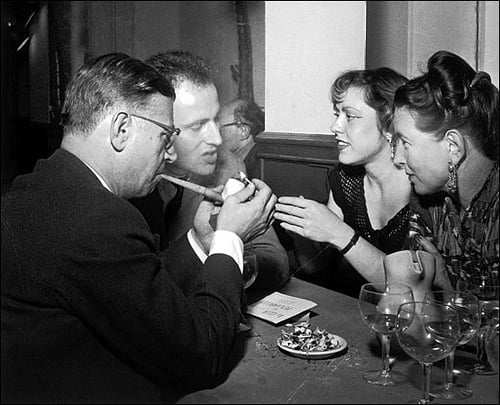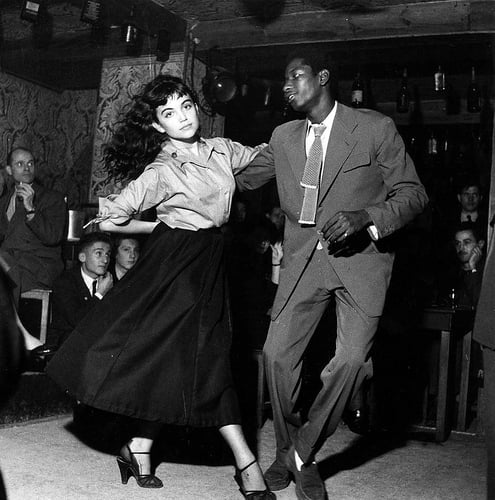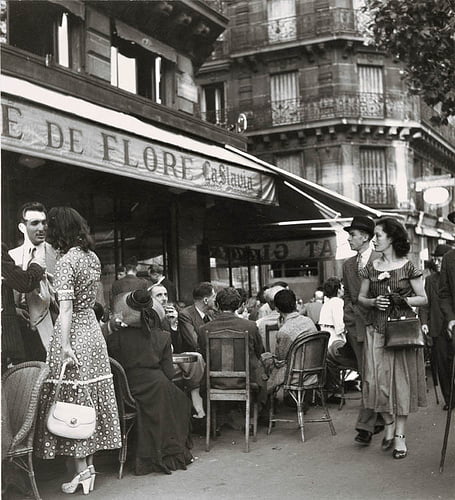Other Recent Articles
French Wine Palace Bargain Bin

The French Wine Palace Bargain Bin earlier this week, went down at the official residence of President “I’m a happy Penguin” Francois Hollande. That monumental (not to mention Historical slice of spendy real estate known as the Elyseé Palace.
The bargains were some of the more “celebrated” vintages from the Palace’s esteemed cellar. (And how could it not be?) The official reason – to give up n’ comin’ French winos a shot at impressing the assorted corporate criminals and political movers n’ shakers who pass Monsieur Hollande’s table. However, the fact that this auction raised double the projected take, does raise more than eyebrows.
Yet, who are we, mere mortals content with a 3 litre Languedoc bag n’ box Merlot to question, let alone understand the motives of our elected representatives, who, like that invisible super being “work in mysterious ways their wonders to perform.”
Sadly DA BG was not able to attend. (cornering the market for 2011 Touraine – at my supermarket. But happily, Margaret Kemp , celebrated scribbler from Spears journal was.
Here’s her lowdown:
It was always unlikely that François Hollande, the French socialist president, would sell the vintage contents of the Élysée Palace’s wine cellars for plonk prices. A two-day auction at Hôtel Drouot, Paris, through Paris auction house Kapandji Morhange, had estimates wine merchants and winemakers can only dream about, but fetched much punchier sums.
Take the 1990 Petrus, glory of the collection: reserve €2,200; actual price €5,800, going, going, gone to the cellars of La Pergola, Rome. Another Petrus on its way to China as you read this.
 Monsieur Hollande plans to replace them with more modest wines from rising stars, offering guests of the President of the Republic an opportunity to enjoy the diversity of France’s winegrowing regions (read: it is no longer PC to serve expensive wines, even at the Élysée. How depressing).
Monsieur Hollande plans to replace them with more modest wines from rising stars, offering guests of the President of the Republic an opportunity to enjoy the diversity of France’s winegrowing regions (read: it is no longer PC to serve expensive wines, even at the Élysée. How depressing).
The president has taken the move to sell off some of his bibulous patrimony as a symbol that he too is undergoing austere times, just as France, with its high deficit and debt and double-dip recession and 23rd straight month of rising unemployment. It is not entirely clear whether even a full clear-out of the cellars will help reduce France’s 4.8 per cent budget deficit or £1.5 trillion debt (90 per cent of 2012 GDP).
Under the hammer
Among prized Élysée bottles under the (metaphorical) hammer of glam auctioneer Ghislaine Kapandji were the above-mentioned Petrus vintages, as well as Bordeaux, Bourgogne, Loire, Côtes du Rhone, Alsace, Sud-Ouest, Champagnes and cognacs. I was tempted to bid for six bottles of ‘Clos de Tart’ L Latour Grand Cru 1982, but am pipped as they go for €1,600 in spite of their ‘slightly damaged label’. Reserve price? €600.
The Élysée Palace wine cellar is the holy of holies protected with bulletproof doors. Virginie Routis, the Élysée’s chef-sommelier since 2007, selected the bottles for auction. ‘These were wines no longer present in large enough numbers to serve at receptions and dinners,’ explained Ms Routis, who told Le Monde newspaper, ‘I choose the wines to match the menu, but also in terms of protocol.’ (Austerity perhaps tactfully – or blithely – went unmentioned.)
Kapandji Morange say that some auction proceeds will be invested in younger, more modest wines underlining the fact that, during his election campaign Monsieur Hollande dubbed himself ‘Monsieur Normal’ who despised the excesses of his predecessors.
All the presidents’ wines
‘It’s lamentable: 1,200 bottles have been auctioned off to the highest bidder, that’s one tenth of the French presidential cellar – Petrus 1990, but also smaller labels,’ complains Véronique Andre, Figaro journalist and author. In her recent book Cuisine de L’Élysée, written with Bernard Vaussion, the Élyseé’s head chef, Mme André spent quality time in the closely guarded cellars.

‘Charles de Gaulle loved champagne, particularly Laurent-Perrier “Grand Siècle”, named in his honour,’ writes Mme Andre. ‘President Pompidou appreciated the grands crus such as Château Mouton Rothschild and certain Cahors wines. François Mitterand was keen on Burgundies, Chablis, Meursault, Puligny-Montrachet, Château Haut-Marbuzet, Saint-Estèphe.
‘Jacques Chirac enjoyed the aromas of le Corton-Charlemagne, and also loved beer! Nicolas Sarkozy was not keen on wine, never refused an old eau-de-vie de Calvados and always charged a glass to his guests with a sip of champagne which he appeared to enjoy,’ adds Mme Andre. And President Hollande? ‘Any red, white or champagne,’ she sniffs.
‘All these wines at auction were served at the table of the Presidents of the Republic, some accompanied by great moments of history as chronicled in my book. The cellars were created in 1947, under the presidency of Vincent Auriol and refurbished in 1995 to improve the conservation of wines and have evolved over the decades, often with gifts from winemakers and champagne houses.’
Read more HERE.
THROW ME A BONE HERE, PEOPLE!
What are ya thinkin’?
French Country Travel Life History
This French Country Travel Life History is in response to one of my commenters who said ” ok all this french country life stuff is great, but hey, how about french city life?”
Well, Calvin, today you get your wish (and 15 seconds of fame from DA BG) because today’s History is not about that laid back French Country Life. But about a city. The most famous one in France. (uh..that would be…..Paris?) And about one of it’s most romanticized quartiers – Saint Germain Des Prés.
The beautiful and talented Laure Van Ruymbeke who has graced these pages before (as all three of my regular readers will attest) waxes nostalgic over this piece of Parisien soil.
After the Liberation, Saint-Germain-des-Prés became a place for jazz, singing and theatre, and also served as a backdrop to French cinema.
Certain well-known figures made the quartier famous, but since the 60s, it has become known as something of a ‘spoiled rich kid’ quarter.
Vian, the zazous and French existentialists
In his ‘Saint-Germain-des-Prés Manual’ (1951), Boris Vian paid homage to a quarter that saw many great literary and artistic minds parade through its streets and cafés (Sartre, Simone de Beauvoir and Simone Signoret, among others). He takes his readers on a page-turning tour through the laneways and “zazou cellars”, where jazz and swing lovers gathered in their bizarre and provocative style during the Vichy period.
Vian invites readers to explore the haunts frequented by the night-owls and existentialists, starting with the Tabou, “a sanctuary for the new generation”. This cellar, transformed into a “centre for organised madness”, welcomed musicians, photographers, fashion designers and other regulars, all sharing the desire to party until dawn in a cloud of smoke.
However, the Tabou didn’t survive the regular complaints from its neighbours on the rue Dauphine, and closed after a year of crazy antics.
Gréco, muse of Saint-Germain-des-Prés
Living near Saint-Sulpice, Juliette Gréco was very young when she discovered the charmingly chaotic world of Saint-Germain-des-Prés. She made numerous appearances in theatre before becoming friends with Vian, Sartre and the journalist Anne-Marie Cazalis, as well as other notable figures. Known for her uniform of long black coats, pullovers and pants, she tried her hand at singing ballads. She became a regular at the Tabou, performing songs and engaging in philosophical discussions.
Gréco perfectly embodies the spirit of Saint-Germain; the place that inspired and invented her. Right in the very heart of the quarter, she shyly invited the already-famous Serge Gainsbourg to her apartment on the rue de Veneuil, and hesitantly played him her songs. Gainsbourg soon took up residence here as well – at number 5A.
Gréco also performed songs by writers that were unknown at the time, such as Brel, Ferré, Guy Béart, Brassens, and poets Queneau, Desnos, Sartre, Prévert, Mauriac. Living each day at a time, she was scandalous to some, and admirable to others. Her life mimicked the transience of the quarter, both intense and ephemeral.
Post-Gréco: Saint-Germain and French cinema
Idolised by filmmakers, the quartier was chosen for the backdrop to many cinematic tales. Ten years later, the Saint-Germain of Gréco’s era seemed very far away.
In Douchet’s works, Saint-Germain is represented in an ironic manner. In ‘Six in Paris’ (1965), he leads us on a touristic stroll through this quarter that plays with appearances. The opening sequence lets the viewer discover the quarter through its historical monuments; the Ecole des Beaux-Arts, the Institut d’Etude Politiques, and the Institut de France among others.
In the 1964 film ‘Nadja in Paris’, Rohmer makes the distinction between these two periods, just as Jacques Baratier does in his documentary, ‘Voilà l’Ordre’ (1996). Baratier shows us the face of Saint-Germain in the 60s: a bohemian quarter gone bourgeois. Artistic authenticity had given way to excess and cultural rebelliousness.
Read more HERE
THROW ME A BONE HERE, PEOPLE
What are ya thinkin’?
French Country Travel Life Tipster – Part Two

French Country Travel Life Tipster – Part Two is the , (I hope) logical continuation of THIS POST. If not – blame DA BG for faulty logic. (but not fawlty towers!)
My guest scribbler – for those fast lane dwellers who really don’t have the time to check out the previous installment of this riveting saga (and aren’t they the best kind?) is the “franco-centric” Winsor Dobbin:
Vannes
The delightful pre-Roman town of Vannes, founded more than 2000 years ago, is far enough off the beaten track in Brittany to ensure it has retained all of its charm.
Stroll its shaded laneways with half-timbered houses and shops built in mediaeval times, or enjoy a coffee overlooking the lively marina quarter with its many waterfront bars and eateries. Located on the Gulf of Morbihan at the mouth of the rivers Marle and Vincin, Vannes is 100 kilometres north-west of bustling Nantes and 450 kilometres south-west of Paris. Many of the locals speak a Breton dialect.
The Gothic cathedral of Saint Peter and the old city fortified walls are among the major attractions, while the gardens overlooking the port are a popular place to relax.
Try the local galettes, a style of pancake served both savoury and sweet, and the famous Breton ciders. The nearby Gulf of Morbihan is home to several spa hotels but the best in town include the Quality Hotel La Marebaudiere, the Hotel de France and the Villa Kerasy Hotel Spa. L’Eden and Roscanvec are considered among the better restaurants in town.
How to get there by train: Vannes has connections to Paris-Montparnasse via Rennes, Nantes and several regional destinations.
Honfleur
A small fishing port in Normandy, Honfleur has strong claims to be regarded as the most picturesque town in France.
On the southern bank of the estuary of the River Seine, the downtown area is notable for its old but handsome terraced houses with slate-covered frontages, which look onto the pretty fishing port and fleet. These ancient houses have been painted by the likes of Claude Monet, and many artists have been based in the town. Cafe terraces, sailing boats returning to the marina, painters immortalising the scene under the watchful eye of curious onlookers, make for an enjoyable leisurely stroll.
The Sainte-Catherine church is the largest wooden church in France and was built in the 15th century, while Maisons Satie is a quirky museum.
Home to fewer than 10,000 people, Honfleur is nonetheless popular with gourmets, who flock here at weekends to enjoy fresh local seafood (shrimps and scallops especially) along with Normandy ciders and the local apple brandy, known as Calvados after the local region.
You’ll eat well just about anywhere here but favourites include L’Endroit, Les Assiette des Mondes and Au Bouillon Normand, while there’s a huge range of hotels, many traditional in style, with La Maison de Lucie a good high-end choice and Hotel L’Ecrin and Hotel Monet more affordable.
How to get there by train: Travel from Paris Gare-Saint-Lazare to Deauville or Lisieux and then take a 15-minute bus ride.
Read more HERE.
THROW ME A BONE HERE, PEOPLE!
What are ya thinkin’?





